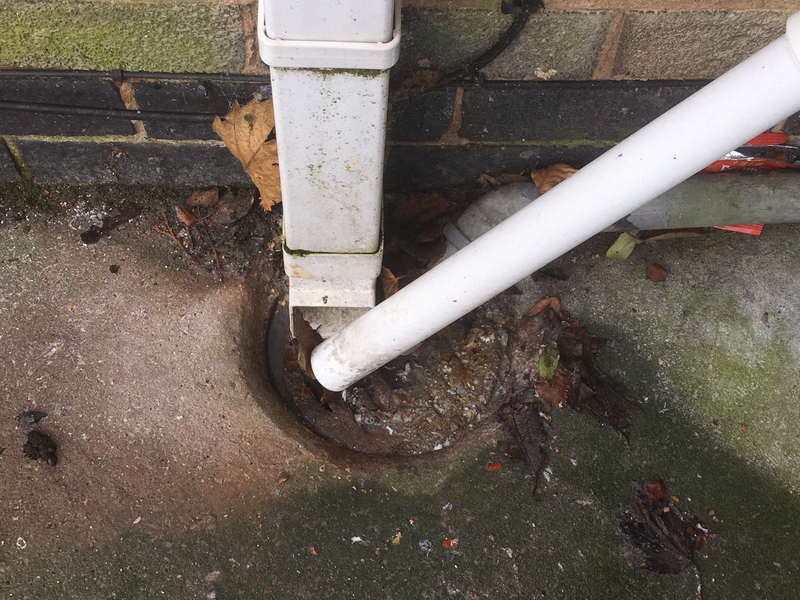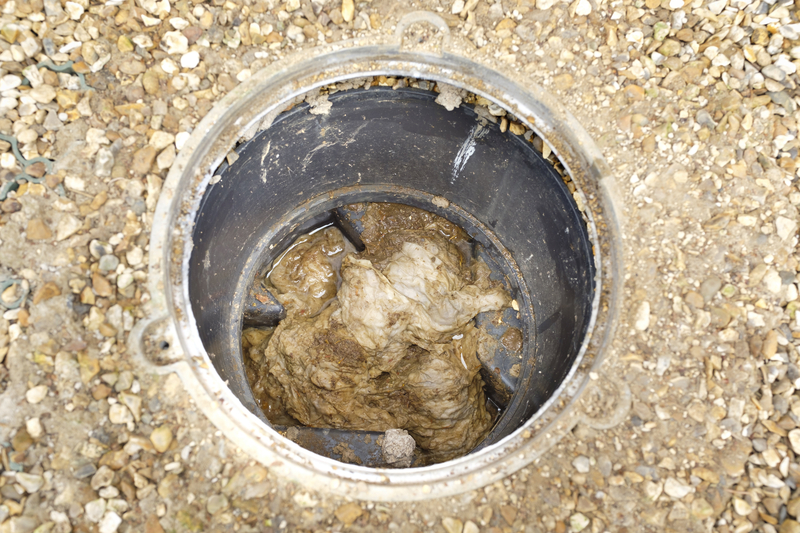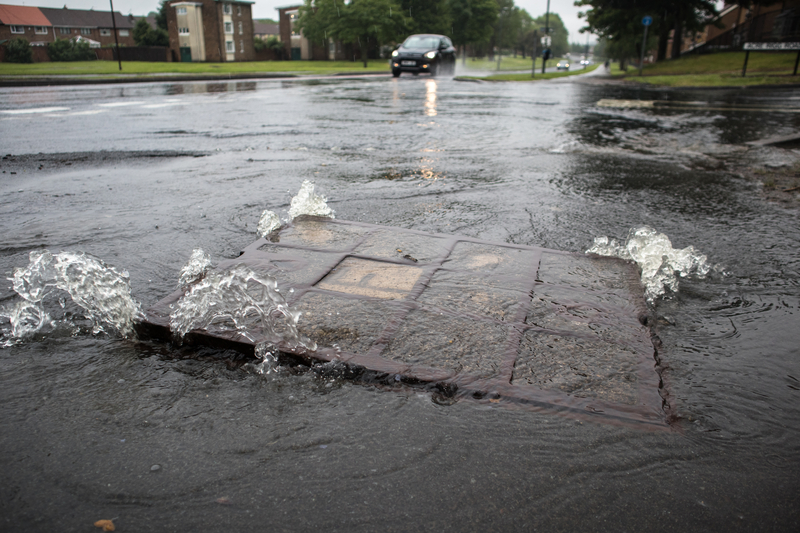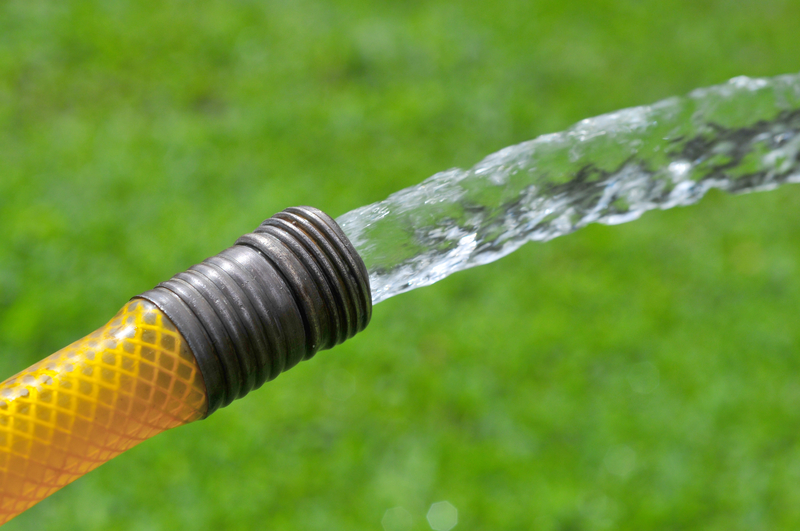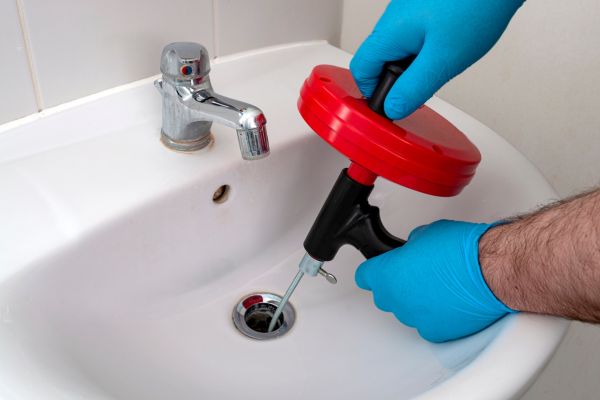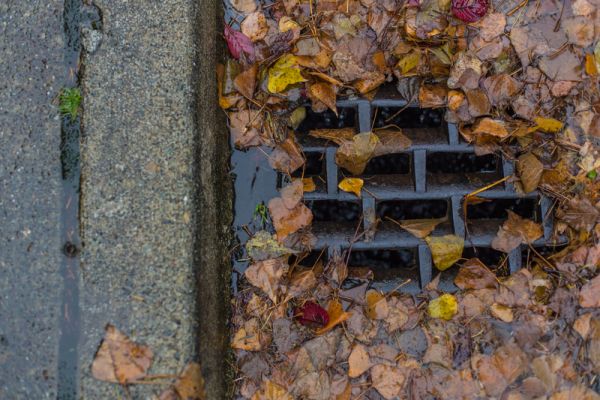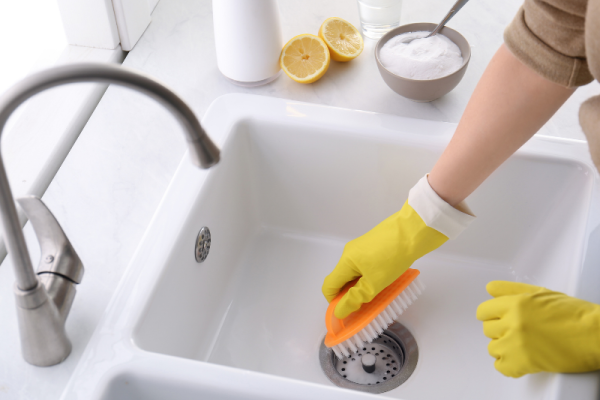In this article
How to unblock a drain outside?
A blocked drain outside can quickly turn into a messy and frustrating situation. A clogged drain can lead to water pooling, flooding, and even potential damage to your property, whether it's due to fallen leaves, debris buildup, or other obstructions. Before you panic or call a professional, know that unblocking a drain outside can often be tackled with simple steps and essential tools.
In this article, we'll walk you through how to unblock a drain outside, empowering you to take control of the situation and restore proper drainage to your outdoor spaces. From identifying the problem to using effective techniques, we'll provide you with the knowledge and tips to tackle this common household issue. So, grab your gloves and let's start clearing the path to a smoothly flowing drain!
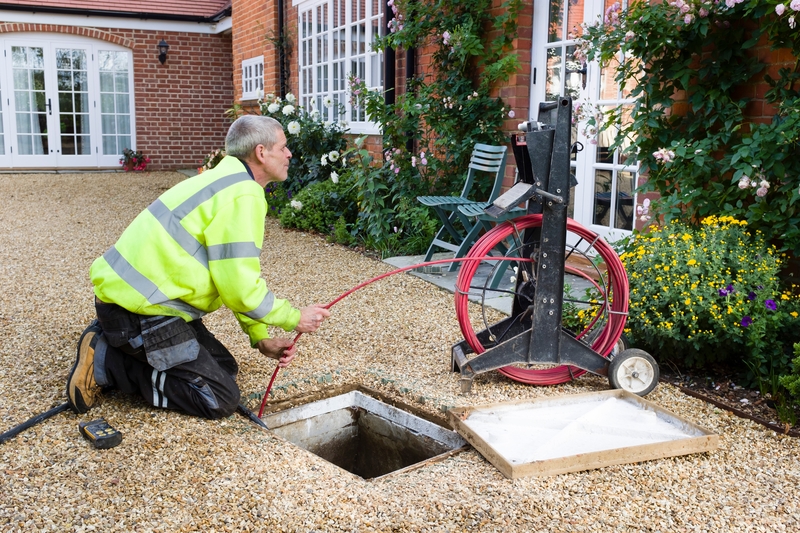
The Importance of Addressing the Issue Promptly
Prevent Property Damage:
Blocked drains can lead to water pooling, which can cause damage to the surrounding property, including structures, landscaping, and foundations. Addressing the issue promptly helps mitigate potential damage.
Avoid Health Hazards:
Stagnant water in blocked drains can become a breeding ground for bacteria, mould, and other microorganisms, posing health risks to humans and pets. Quick action reduces the chances of these hazards developing.
Maintain Functional Drainage System:
A blocked drain disrupts the proper functioning of your drainage system. Addressing the issue promptly ensures that water can flow freely, preventing further complications and minimising inconvenience.
Cost Savings:
Early intervention can help prevent more extensive damage and costly repairs. By promptly addressing the blockage, you can save money by avoiding major plumbing emergencies.
Maintaining clear outdoor drains is crucial for several reasons
Keeping drains clear outside is crucial for maintaining proper water flow and preventing potential issues on your property. Let's examine why drain unblocking is vital to maintaining your outdoor drains and what risks may occur If the blocked drain persists.
Prevents Water Seepage:
If a drain outside your property is blocked, water can seep into the surrounding soil, foundations, walls, and other structures. Over time, this water infiltration can weaken the structural integrity of your property, leading to cracks, foundation damage, and even mould growth.
Minimises Flooding Risks:
When a drain is clogged, rainwater and runoff have nowhere to go, resulting in puddles and potential flooding in your yard or near your property. This excess water can damage landscaping, erode soil, and even seep into basements or lower levels of your home, causing extensive water damage.
Preserves Landscaping:
A clear drain helps preserve the health and beauty of your outdoor spaces. By directing water away from your gardens, lawns, and plants, you prevent waterlogging, root rot, and other issues that can harm the vitality of your landscaping investments.
Avoids Erosion:
Clogged drains contribute to soil erosion as water cannot flow away properly. Erosion can result in the loss of topsoil, destabilisation of slopes, and damage to pathways and driveways. By keeping drains clear, you help maintain the stability of the land on your property.
Protects Structures and Infrastructure:
Blocked drains can cause water to accumulate near structures such as patios, decks, and retaining walls. This prolonged exposure to moisture can lead to deterioration, rotting, or even structural failure over time.
Increased Lifespan of Plumbing System:
Regular drain unblocking can help extend the lifespan of your plumbing system. By addressing blockages promptly, you prevent excessive pressure on pipes, reduce the risk of corrosion, and minimise wear and tear on the system.
Minimising Health Risks:
Standing water in blocked drains becomes a breeding ground for mosquitoes, bacteria, and other pests, unpleasant odours, insect infestations, and the growth of mould or mildew that can pose health risks to you, your family, and your pets. Keeping drains clear reduces the chances of stagnant water and associated health hazards.
Why do you get a blocked drain outside?
- Debris Buildup: Leaves, twigs, dirt, and other debris can accumulate in outdoor drains, especially during the fall season. This buildup can obstruct the flow of water and lead to blockages.
- Roots and Vegetation: Tree roots and invasive plants have a knack for finding their way into drain pipes. As they grow, they can penetrate the pipes, causing blockages and even pipe damage.
- Sediment and Grime: Over time, sediment, silt, sand, and other forms of accumulated grime can settle in outdoor drains. This buildup restricts water flow and decreases drainage efficiency.
How do you know you have a drain blocked?
Several signs can indicate a blocked outdoor drain, but here are some of the most common:
- Slow Drainage: If water drains slowly or not at all, it clearly indicates a blockage in the drain.
- Standing Water: Pools of water forming near the drain or in the surrounding area can be a sign of a blocked drain.
- Foul Odours: Unpleasant smells from the drain area can indicate stagnant water and trapped debris, possibly causing the blockage.
- Overflow or Backups: If water backs up from the drain or overflows onto the surface, it's a definite sign of a blockage that needs immediate attention.
Assessing the Blockage
When dealing with unblocking drains, it's essential to properly assess the situation before taking any action. Here are a few steps to help you evaluate the blockage:
- Visual Inspection: Start by visually examining the drain area. Look for any visible signs of blockage, such as standing water, debris buildup, or any unusual odours.
- Water Flow Test: Pour a small amount of water into the drain and observe how it drains away. If the water drains slowly or doesn't drain at all, it indicates a blockage.
- Check Other Drains: Verify if other drains nearby are also experiencing slow drainage or blockages. This can help determine if the problem is isolated to a specific drain or a more widespread issue.
Tools and Materials
Plunger:
A plunger is a basic tool that can help create suction and dislodge minor blockages in the drain. Using a plunger specifically designed for drains, with a flat rubber cup at the end, is important.
Drain Snake or Auger:
A drain snake or auger is a long, flexible tool that can reach deeper into the drain to break up or remove stubborn blockages. It typically consists of a coiled wire or cable with a handle at one end. A manual drain snake can be effective, but you may need a motorised drain snake if the blockage is severe.
Pipe Cleaning Brush:
A pipe cleaning brush with stiff bristles can be helpful in removing debris or buildup from the inner walls of the drain pipe. This tool helps to clear away any residue that may contribute to blockages.
Wet/Dry Vacuum:
A wet/dry vacuum can be handy for removing standing water from the drain or extracting debris causing the blockage. Ensure the vacuum is suitable for both wet and dry use.
Bucket or Container:
A bucket or container is necessary to collect water and debris from the drain during the unclogging process.
Gloves and Protective Eyewear:
It's essential to wear rubber gloves and protective eyewear to shield yourself from any potential dirt, debris, or chemical splashes.
- Additionally, you may need some basic materials:
- Boiling Water: Hot water can help dissolve certain types of blockages. Boil water and carefully pour it down the drain to break up organic matter or grease.
- Baking Soda and Vinegar: This natural and eco-friendly solution can be effective for minor blockages. Pour half a cup of baking soda followed by half a cup of vinegar down the drain, cover it, and let it sit for about 30 minutes. Then, flush it with hot water.
- Enzyme-based Drain Cleaner: An enzyme-based drain cleaner can help break down organic matter causing the blockage. Follow the instructions on the product label carefully.
Step 1) Clearing Debris from the Drain
- Put on protective gear: Before starting the process, put on rubber gloves and protective eyewear to shield yourself from potential dirt, debris, or chemical splashes.
- Remove visible debris: Use your gloved hands or a small tool, such as tongs or a wire hanger, to reach into the drain opening and remove any visible debris. This may include leaves, twigs, stones, or dirt. Place the removed debris into a bucket or container for safe disposal.
- Check the drain cover: If your outdoor drain has a cover or grate, remove it carefully and clear away any debris that may have accumulated on top of it. Use a brush or your gloved hands to clean the cover, removing any dirt or debris hindering proper drainage.
- Flush the drain: After removing the visible debris, turn on a hose or pour water to flush out any remaining loose debris. This can help clear away smaller particles that may be causing partial blockages.
- Dispose of debris properly: To dispose of the collected debris, check local regulations and guidelines for waste disposal in your area. Typically, organic matter, such as leaves and twigs, can be disposed of in yard waste bins or compost piles. Non-organic debris should be bagged and placed in the appropriate trash receptacle.
Remember, always prioritise safety and handle debris with caution. Avoid pushing debris further into the drain or using excessive force that could damage the drain system. If you encounter a particularly stubborn or extensive blockage, it's recommended that you seek professional assistance.
Step 2) Flushing the Drain
When it comes to flushing out stubborn blockages in an outdoor drain, you can try a few methods. Here are some practical ways to flush the drain:
Garden Hose:
Connect a garden hose to an outdoor water source and place the nozzle directly into the drain opening. Turn on the water at full pressure and allow it to flow through the drain. The force of the water can help dislodge and flush away blockages.
Pressure Washer:
If you have access to a pressure washer, it can be even more effective in clearing stubborn blockages. Attach the appropriate nozzle for drain cleaning to the pressure washer and insert it into the drain opening. Start with low pressure and gradually increase it as needed. Move the nozzle back and forth to cover the entire drain area, allowing the high-pressure water to break up and flush away the blockage.
Tips for Effective Flushing:
- Use a nozzle attachment: To create a more focused and powerful stream of water, use a nozzle attachment on your garden hose or pressure washer designed explicitly for drain cleaning. These attachments can help direct the water flow directly into the drain and increase its effectiveness in clearing blockages.
- Work in short bursts: Instead of continuously flowing water, work in short bursts to give the water time to dislodge the blockage. This allows the pressure to build up and exert more force on the clog, increasing the chances of clearing it.
- Be cautious with pressure: Using a pressure washer, start with low pressure and gradually increase it as needed. Too much pressure can damage the drain pipes or push the blockage more profoundly into the system. Exercise caution and monitor the effectiveness of the pressure throughout the process.
- Repeat if necessary: In some cases, stubborn blockages may require multiple attempts to fully clear. If the initial flushing does not entirely remove the blockage, repeat the process a few times to thoroughly clear the drain.
Step 3) Chemical Drain Cleaners
Chemical drain cleaners can be an option for unclogging drains, but using them safely and responsibly is important. Here are some tips on when and how to use chemical drain cleaners:
- Follow manufacturer's instructions: Read and follow the instructions provided by the manufacturer of the chemical drain cleaner carefully. Different products may have specific usage instructions and safety precautions that must be followed.
- Wear protective gear: When using chemical drain cleaners, it is essential to protect yourself. Wear gloves, safety goggles, and a face mask to avoid direct contact with the chemicals and prevent potential harm.
- Ventilate the area: Ensure proper ventilation in the area where you are using the chemical drain cleaner. Open windows or use fans to circulate fresh air and prevent the buildup of fumes.
- Avoid mixing chemicals: Do not mix different chemical drain cleaners or other cleaning products. Mixing chemicals can create hazardous reactions and increase the risk of accidents.
- Use in moderation: Use chemical drain cleaners sparingly and only when necessary. Overuse can damage pipes and plumbing systems over time.
- Allow sufficient time: Let the chemical drain cleaner sit for the recommended amount of time specified on the product label. This allows the chemicals to break down the clog effectively.
- Flushing with water: After using a chemical drain cleaner, flush the drain thoroughly with water to remove any residual chemicals and ensure the drain is clear.
Final thoughts
Unblocking an outdoor drain involves several key steps that can help restore proper drainage and prevent further issues. By recapping the steps involved, we can reinforce the importance of regular maintenance and encourage you to confidently take action to get your outdoor drain properly working again. Drainage systems can be tricky and while this guide is here to help - some more advanced problems may need a professional drainage engineer and a professional drain cleaning service.
Regular maintenance is crucial to avoid your drains getting to this stage and to keep your outdoor drains functioning optimally. By clearing away debris and addressing potential blockages early on, you can avoid more severe problems in the future. We encourage you to take action with confidence when unblocking your outdoor drain. The process may seem daunting initially, but you can tackle the task successfully by following these steps and being proactive.
Contact Us
For general drain clearance and to hear more about our drain unblocking services, please don't hesitate to contact us. Here at Cotswolds Drainage, we specialise in drain blockages of all sizes. With our trained drain unblocking specialists and advanced drain unblocking equipment, we are here to help with issues that you may not be able to tackle yourself.
Get in touch
Contact our friendly and professional team via form, phone or email for any drainage issues you may have.
From blocked drains to septic tank repairs and replacements, we're here to help. We have over 25 years of experience and offer 24/7 emergency callouts.
-
01386 882324
-
WhatsApp
-
This email address is being protected from spambots. You need JavaScript enabled to view it. -
See what our customers think
